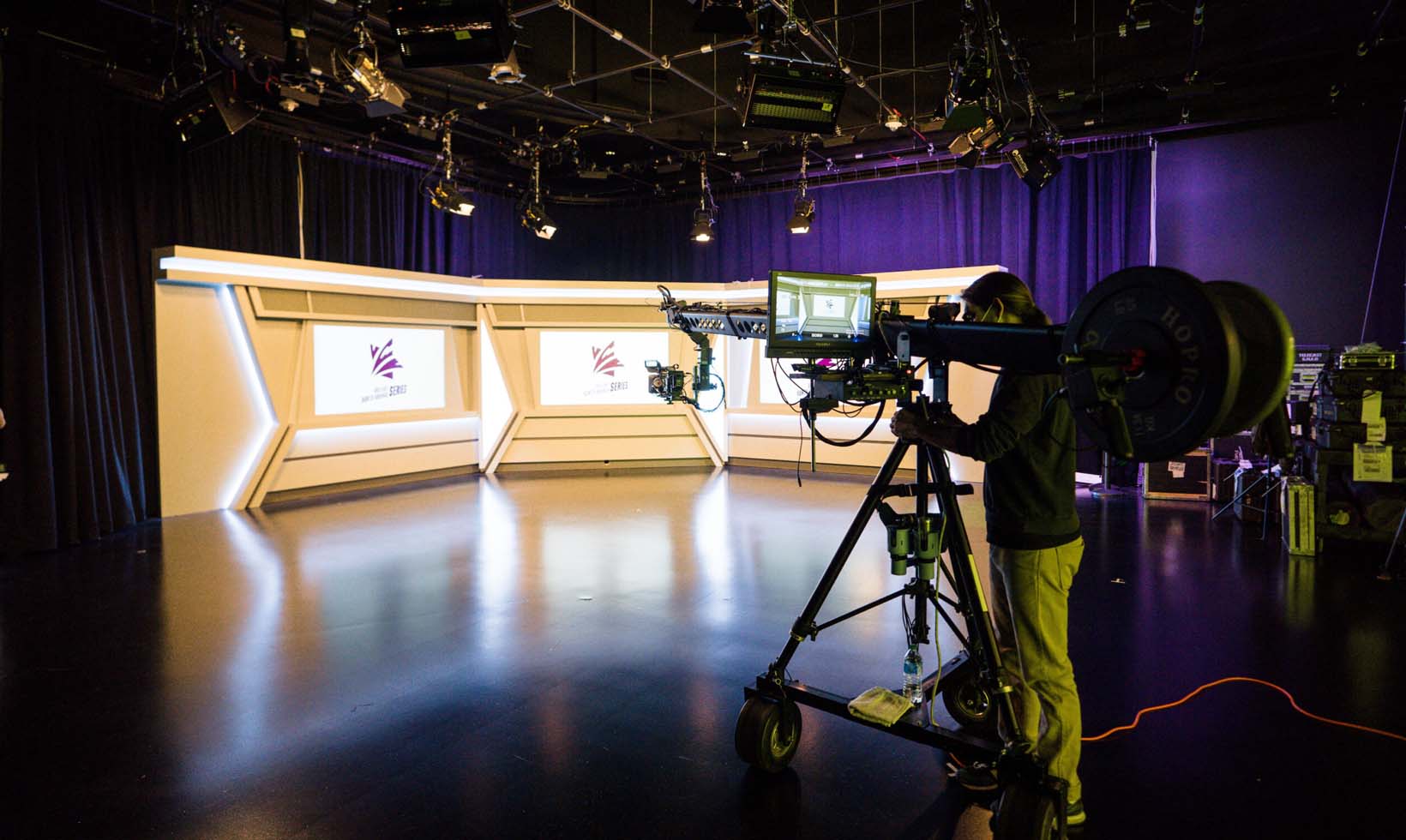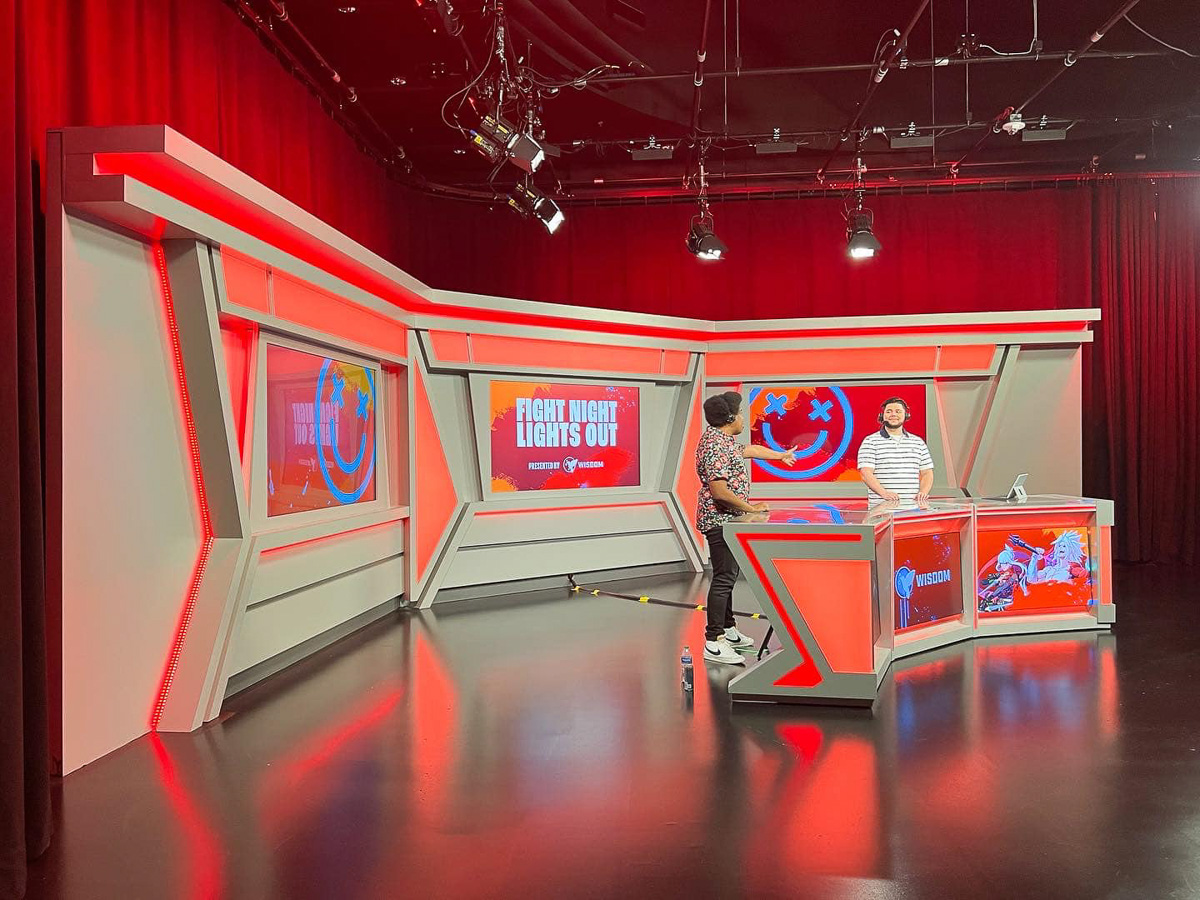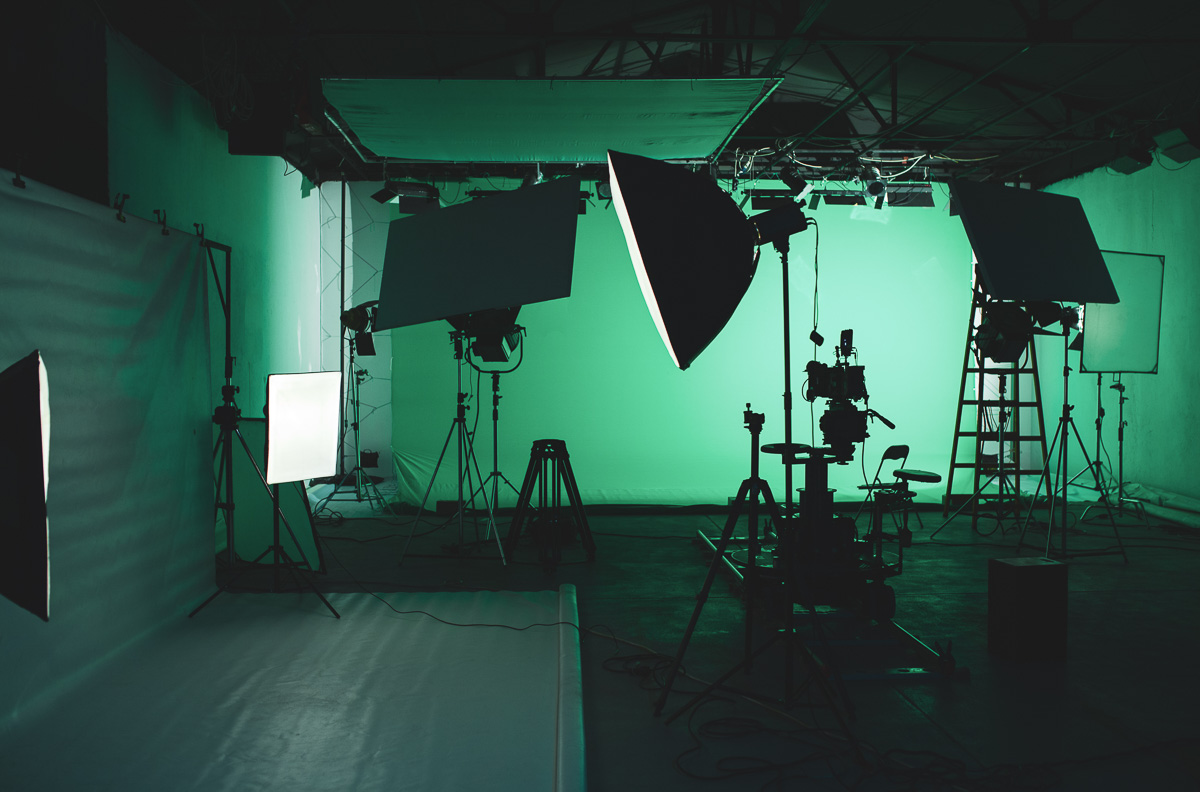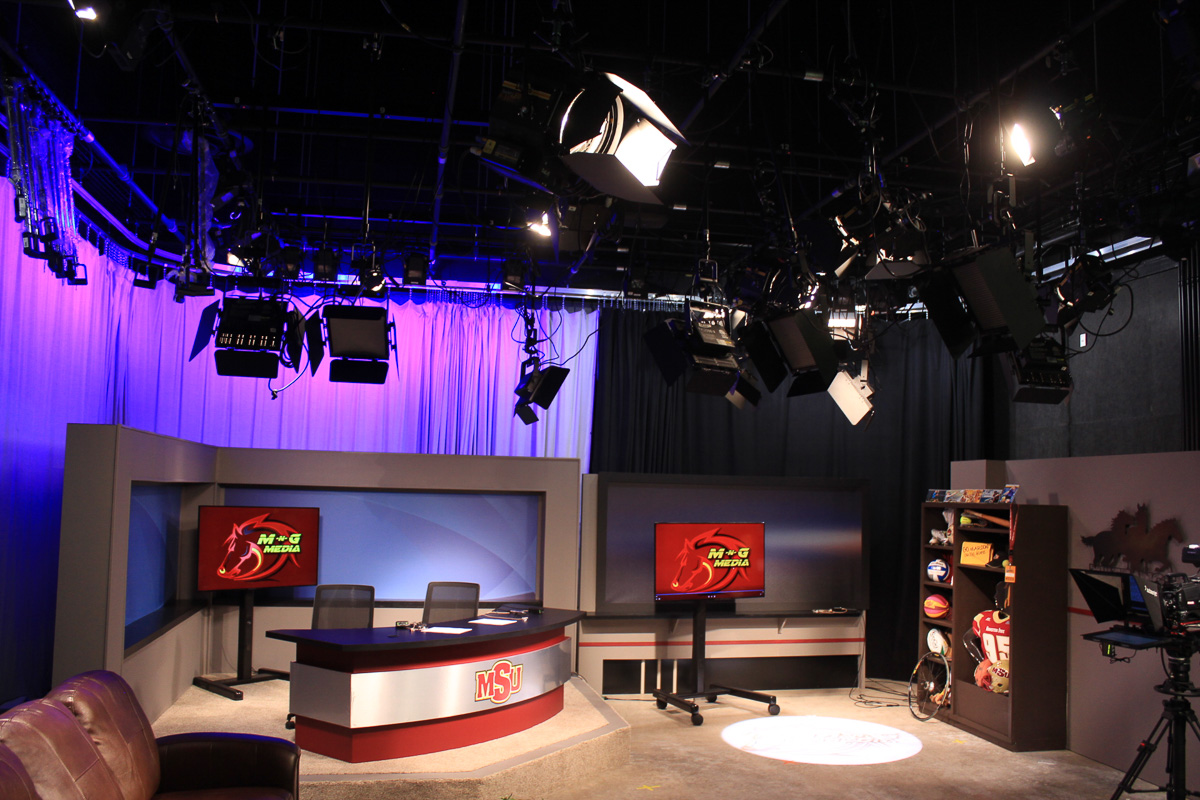Master Your Media: The Benefits of Corporate Broadcasting & Production Studios

Enterprises and other organizations compete for their audiences’ attention in a crowded, media-saturated environment where mindshare is an increasingly valuable commodity. Success depends on connecting to your audiences with high-quality content that is timely, relevant, and professionally produced. Typically, enterprises either outsource content creation or rely on traditional media outlets to convey their messaging. But increasingly, savvy organizations are taking it upon themselves to produce content and connect directly to their audiences.
What’s the value of bringing broadcasting and production in-house?
It’s all about control – and economics, flexibility, nimbleness…and more.
Corporate broadcast and production studios ensure both content and style reflect your organization’s objectives and align with your brand. Moreover, highly utilized facilities will ultimately save time and money over external resources. And with the right team in place, you can disseminate a rich array of content quickly and directly to your audiences.
But it’s no small undertaking to produce broadcast-quality communication. You need an experienced partner to help you create the facility as well as content production professionals to receive, process and distribute content efficiently and powerfully. Once you have aligned your technology and talent, though, you can become a serious media player, capable of:
- Live Production
- Produce and participate in media interviews and panel discussions
- Deliver addresses remotely
- Enterprise Broadcasting
- Host town hall meetings in company auditoriums or theaters
- Hold state-of-the-company meetings
- Conduct employee training
- Host investor meetings
- Produce product launches and sales meetings
- Produce television content from corporate TV studios
- Post-production and asset management
- Distribution
Right now, Alpha is creating production studios for a world-renowned medical institution. These full-featured facilities will enable the creation and distribution of content to advance a wide array of organizational objectives.
- Educational content for staff – from core medical school curricula to ongoing professional education.
- Public outreach – educating healthcare consumers on a number of topics
- Internal organizational communication
- External communication for shareholder meetings and boards of directors.
What exactly is an in-house corporate broadcast production studio?
Similar to a facility operated by a media company, in-house broadcast studios enable live and recorded broadcasts. Here you can record and edit programs for distribution across media channels not only for marketing and branding purposes, but to advance a host of internal objectives ranging from training to organizational communication across locations.
Perhaps a corporate broadcast studio is best understood as a facility that enables you to receive, process and distribute content. Here a wide range of live and recorded media can be gathered and stored, edited and crafted, and then shared with relevant audiences in pursuit of an organization’s mission and strategic objectives.
Production studios can be divided into two parts:
The Studio: Where content is created.
Traditionally, studios have been physical environments, although today’s technology increasingly allows for the creation of virtual studios.
A physical studio requires:
- Space – At least 14 to 16 feet high to accommodate the equipment needed for lighting, etc.
- Cameras – Installed in front of or around the scene, mounted on tripods or on floor tracks or jibs. You may even have ceiling tracks and robotic cameras.
- Monitors – Needed to allow both hosts and producers (and possibly the audience) to know what’s actually being aired.
- Video wall – Optional, as an alternative to traditional furniture or scenic components.
- Audio integration
A virtual studio uses the chroma key technique:
- Green-painted walls/backdrop and floor – Green curtains are also used.
- A video mixer – Substitutes the green background for whatever you wish to insert – a clip, image, virtual studio, etc.
- Lighting – Balanced lighting is important to separate talent from the green screen.
The Production Control Room – where back-of-house activities take place
This is the behind-the-scenes portion of your facility. It typically consists of:
- Studio Control Room – The technical area where camera and microphone signals come together and your essential operators make the production a reality.
- Editing Room – Where recordings are edited before broadcasting or streaming.
- Backstage green room/makeup room.
Additional uses of control rooms
Control rooms can serve multiple purposes in enterprise and educational settings and can enable organizations to use a wide variety of spaces for content generation. In theaters and auditoriums, lobbies, and even large meeting rooms, control rooms provide the capability to produce impactful all-hands meetings, town halls, sales presentations, product or content reveals, and company celebrations or strategy sessions.
Similarly, in education settings, control rooms not only enable the production of high-profile events, they provide a valuable training environment for students. These components came together recently in a production studio Alpha created for Midwestern State University. Asked to create a comprehensive production facility in a challenging space, we designed and integrated a flexible, multipurpose broadcast facility where students train on the same high-end technologies installed in professional studios.
Deciding if a corporate broadcasting and production studio is right for your organization
The ability to create and disseminate high-quality content to a wide array of audiences can be a boon for corporate enterprises and other organizations.
Internal and external communications, branding, and marketing can be made more cost-effectively and rapidly than ever before, and production quality can rival the best efforts of outsourced media production partners. The advantages are clear. A corporate broadcasting and production studio help you:
- Align brand image and corporate messaging cohesively and powerfully.
- Create a wider variety of content in various formats for marketing videos, training modules, townhall productions, and more.
- Streamline, speed, and tailor the production process.
- Save over outsourced broadcasting and production resources, depending on facility utilization.
When it comes to driving your organization’s strategic objectives forward, the possibilities enabled by corporate broadcasting and production studios are vast – especially when you have the right partner to help you Experience Possible™.
Broadcasting & production studio technologies
Corporate broadcasting and production studios are specialized environments with a unique jargon that can be daunting. Alpha has created the following list to help you better understand, and refer to, the range of on-premises gear in these facilities:
- Video Mixer / Switcher – This is the core element of your studio. It enables you to air the desired source via simple or complex transitions; create and manage virtual sets; superimpose graphics or text.
- Video Router – The video router, or matrix, is the sorting center for the signals of one or more studios. The router makes it possible to send the final signal of a video mixer to the equipment that manages transmission and to the encoders for satellite transmission, or to production studios for the recording and editing of the signal. It’s managed remotely via control panels or software.
- Camera Equipment – Studio cameras, PTZ cameras, ENG cameras (used mainly for external recordings which are edited in the studio before being aired).
- Video Recorder – Allows you to record a video signal directly onto PC/Mac, SD cards or SSD hard disks.
- Audio Equipment – Everything you need to manage the audio, including audio mixer, speakers, microphones, in-ear monitors (IFB), etc.
- Video Transmitter – Carry video and audio signals from one place to another. Usually come in pairs – a transmitter or “sender” and a receiver.
- Intercom System – Connects multiple operators across rooms or spaces. Can be wired or wireless.
- Studio Prompter / Teleprompter – Fundamental during news, sports and weather programs. Allows the host to easily read the prompts without looking away from the camera.
- Audio and Video Monitoring – Monitors enable studio operators to quality check audio and video signals traveling between one direction and the other, internally and externally.
- Audio Processing – As with the video, the audio is often run through a digital signal processor (DSP) and re-embedded into the SDI signal. The audio processor is essential for audio transmission.
- Converters – There are SDI-to-HDMI converters, Audio to SDI converters, SDI distributors, SDI-to-fiber converters and others.
- Encoders and Decoders – Transport the audio and video signal from one point to another via the internet, fiber, or bonded cellular point-to-point. Encoders are also used to prepare video for web streaming to CDN, YouTube and Facebook.
- Studio Curtains and CYC Walls – Essential, especially with a chroma key.
- Studio Lighting and Truss – Ceiling-mounted LED light fixtures. The truss allows you to install and point all the lights.
- Studio Clock – A key point of reference for all members of the crew. Often there are additional clocks in the studio space.
- Tripods and Camera Support
- Video Wall – Modular in design, can be combined to reach the desired dimensions of the screen. Often used in talk shows or news programs to show multimedia and external signals in the studio. It can also be used to create virtual scenes and backdrops.
Keep in mind that key aspects of live and post-production can also be handled remotely. Recently, Alpha enabled the production team for a highly successful, iconic TV program to remotely view and edit via remote desktop connections by equipping them with the Gallery Sienna Processing Engine cloud solution. You can read more about that here.
FAQs
What are corporate broadcasting and production studios?
Much like commercial broadcast studios, corporate broadcast studios are full-featured facilities that allow enterprises and other organizations to create, receive, process and distribute media content. They can incorporate physical and virtual elements to enable the creation and dissemination of high-quality content to a wide variety of audiences. Depending on utilization and an organization’s strategic objectives, corporate broadcast studios can be a highly cost-effective alternative to the outsourcing of media production.
What are typical uses for a corporate broadcasting and production studio?
Corporate Broadcasting and production studios can function as live production facilities where organization members can conduct media interviews and panel discussions, deliver addresses remotely, and participate in town hall and state-of-the-company meetings. Enterprise broadcasts can also be used for employee training, investor meetings, product launches and showcases, and a wide array of other uses. They also offer enterprises the ability to handle post-production, media asset management and distribution in-house.
What are the components of a corporate broadcasting and production studio?
Typically, a corporate broadcasting and production studio’s components can be divided into two categories: production studio and production control room or booth. A physical studio space will often have furniture and set components, a minimum of two cameras on various kinds of mounts, confidence monitors, teleprompters, audio integration, a lighting grid, and perhaps a video wall or chroma key wall. Virtual studios will have many of these elements except furniture and set components. Among them may be an LED wall and floor, camera tracking systems, and equipment that allows for real-time rendering of a virtual environment. A production control room or booth will have live video production switchers, live audio mixing consoles, a monitor wall, technical furniture, graphic systems, video recorders, camera controller, streaming video encoders and intercom systems, and other components.
What is the value of corporate broadcasting and production?
Corporate broadcasting and production can help align brand image and corporate content cohesively and powerfully. It provides the flexibility to create a wide variety of content in various formats. It streamlines the production process for faster, more tailored content. It improves communication and engagement, and when highly utilized can help an organization realize significant cost savings over outsourced broadcasting and production.





